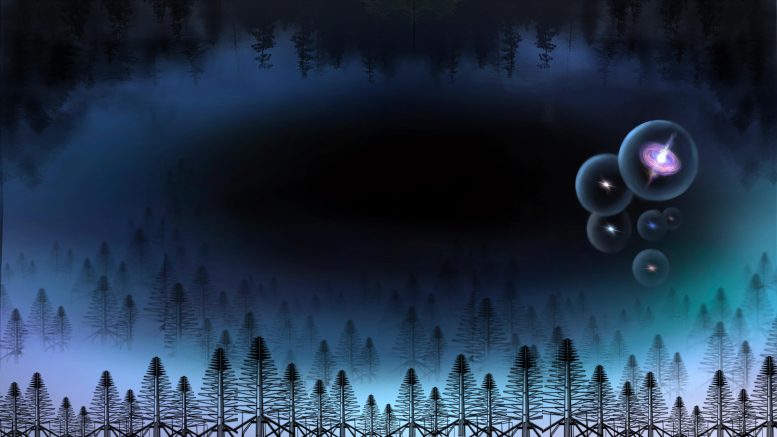
Exploring dark matter and the first galaxies simultaneously with the 21-cm forest. This approach can help constrain dark matter properties and provide insights into the thermal history of the universe. Credit: NAOC & NEU
Exploring dark matter and the first bright galaxies simultaneously: 21-cm forest probe may unlock secrets of early universe.
A joint research team has proposed a novel way to study dark matter and the formation of early galaxies using the 21-cm forest probe, a concept previously deemed theoretical. The ongoing Square Kilometre Array project and the recent discovery of high-redshift radio-loud quasars have made this method viable. This new approach could unlock insights into the universe’s thermal history and dark matter properties.
The mystery of the first galaxies of the universe is an indomitable urge of human beings. The formation of them is mastered by the nature of dark matter which is also one of the most important problems faced by fundamental physics. However, understanding the nature of dark matter—for example, whether it is cold or warm—and its subsequent effect on the first galaxy formation is a huge challenge.
Now, a joint research team from Northeastern University (China) and the National Astronomical Observatories of the Chinese Academy of Sciences (NAOC) has proposed using a novel probe to try to shed light on the nature of dark matter and the early formation of galaxies simultaneously.
The team’s study was published in the journal Nature Astronomy on July 6.
One way of understanding dark matter is to try to measure the mass of dark matter particles through cosmological observations of small-scale structures. But detecting small-scale structures in which no star formation has ever occurred is difficult, especially during the cosmic dawn. Fortunately, atomic hydrogen gas in and around these dark, small structures from cosmic dawn creates 21-cm absorption lines along the lines of sight between Earth and high-redshift radio point sources. These absorption lines are known collectively as the 21-cm forest.
The 21-cm forest probe is a theoretical concept proposed more than 20 years to probe for gas temperatures and potentially for dark matter properties during the cosmic dawn. So far, scientists have not attempted to actually use the probe due to numerous challenges, including extremely weak signals, the difficulty in identifying high-redshift background sources, and the degeneracy between the mass of dark matter particles and the heating effect, which would prevent the probe from constraining either the particle mass or the heating effect from the first galaxies.
Recently, though, a number of high-redshift radio-loud quasars have been discovered. In addition, construction on the Square Kilometre Array (SKA)—an international initiative to build the world’s largest radio telescope—began last December. Both these developments suggest that using the 21-cm forest probe will soon be feasible.
Inspired by power spectrum analyses widely used in cosmological probes, the NAOC researchers realized that the distinctive scale-dependences of the signals caused by the warm dark matter effect and the heating effect, respectively, could be used to statistically extract key features to distinguish the two effects.
In this study, the researchers proposed a novel statistical solution to simultaneously solve the weak signal problem and the degeneracy problem, by measuring the one-dimensional (1-D) power spectrum of the 21-cm forest. The signal scale-dependence revealed by the amplitude and shape of the 1-D power spectrum makes the 21-cm forest probe a viable and effective means of simultaneously measuring dark matter properties and the thermal history of the Universe.
“By measuring the one-dimensional power spectrum of the 21-cm forest, we can not only make the probe actually feasible by increasing the sensitivity, but also provide a way to distinguish the effects of warm dark matter models and early heating process,” said XU Yidong, corresponding author of the study. “We will be able to kill two birds with one stone!”
In scenarios where cosmic heating is not too severe, SKA Phase 1’s low-frequency array will be capable of effectively constraining both dark matter particle mass and gas temperature. In cases where cosmic heating is more significant, utilizing multiple background radio sources during SKA Phase 2 will enable robust detection capabilities.
The 21-cm forest offers a viable means for constraining dark matter at redshift ranges beyond the reach of other observations. By measuring the heating level, the 21-cm forest provides a way to constrain the spectral properties of the first galaxies and the first black holes, so as to shed light on the nature of the first bright objects in the Universe. Using the 21-cm forest probe will serve as an indispensable avenue for advancing our understanding of the early Universe and peering into the mysteries of both dark matter and the first galaxies.
Since application of the 21-cm forest probe is closely tied to observations of high-redshift background radio sources, the next step will also involve identifying more radio-bright sources at the cosmic dawn (such as radio-loud quasars and gamma-ray burst afterglows) that can be followed up in the SKA era.
Reference: “The 21-cm forest as a simultaneous probe of dark matter and cosmic heating history” by Yue Shao, Yidong Xu, Yougang Wang, Wenxiu Yang, Ran Li, Xin Zhang and Xuelei Chen, 6 July 2023, Nature Astronomy.
DOI: 10.1038/s41550-023-02024-7

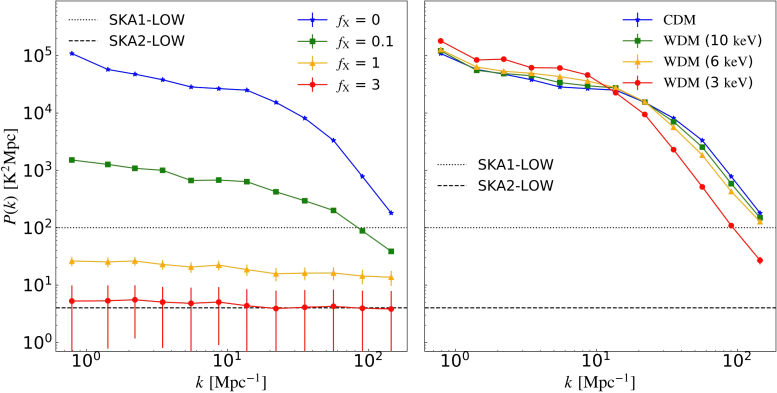
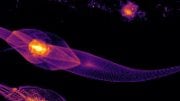
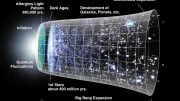
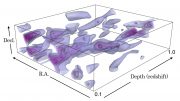
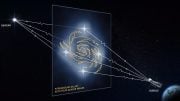

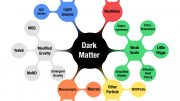
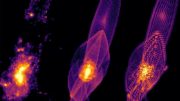
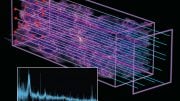
Another possibility, from a view of String Theory, is that Dark Matter appears to us as an effect of string/anti-string annihilations. As you may know, quantum mechanics requires that strings must be formed as pairs in the quantum foam – a string and an anti-string – that immediately annihilate each other. Quantum mechanics also requires both the string and anti-string to be surrounded by “jitters” that reduce their monstrous vibrating energies. What if this jitter remains for a fraction of an instant after their string/anti-string annihilations? This temporary jitter would be seen by us as matter, via E=mc2, for that instant before it too returns to the foam. That’s why we never see it – the “mass” lasts only for that instant but is repeated over and over and over, all over. Specifics on this can be found by searching YouTube for “Dark Matter – A String Theory Way”